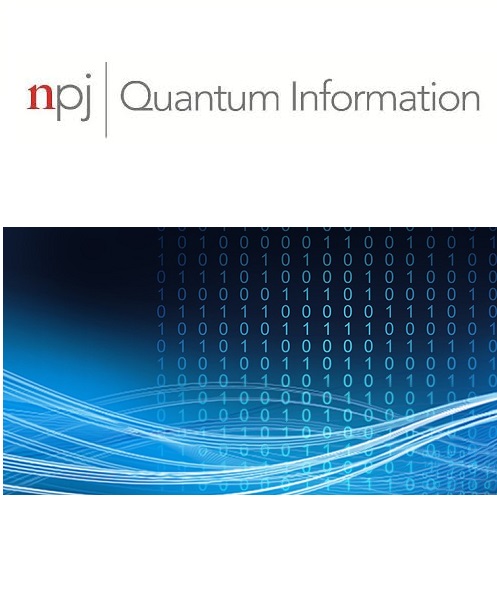A 2-Gbps low-SWaP quantum random number generator with photonic integrated circuits for satellite applications.
IF 8.3
1区 物理与天体物理
Q1 PHYSICS, APPLIED
引用次数: 0
Abstract
We introduce a low size, weight and power quantum random number generator (QRNG) utilizing compact integrated photonic asymmetric Mach-Zehnder interferometers (AMZIs). Our QRNG is based on phase-diffusion in two gain-switched lasers interfered within two separate chip-AMZIs. By substituting the high-bit analog-to-digital converters, typically employed to digitize the random intensity signal from each laser, with clocked comparators we significantly reduce both the complexity and power consumption of the device. Furthermore, by performing the exclusive OR (XOR) operation on the output random bits of each channel we are able to reduce the processing requirements. The QRNG architecture can be integrated with an overhead power consumption of just 7.93 W, accounting for the opto-electronics and FPGA implementation, providing fast random number generation at up to 2 Gbps. We demonstrate the real-time seeding of a free-space decoy-state quantum key distribution system using our QRNG. Our design and implementation provides a practical solution for QRNGs requiring low-power and high bit rates. This advancement is important for practical QRNGs and particularly for application in resource-constrained environments such as space-based quantum key distribution.2 gbps低swap量子随机数发生器,带光子集成电路,用于卫星应用。
本文介绍了一种利用紧凑集成光子不对称马赫-曾德干涉仪(AMZIs)的低体积、低重量、低功率量子随机数发生器(QRNG)。我们的QRNG是基于两个增益开关激光器在两个独立的芯片- amzi内干扰的相位扩散。通过用时钟比较器取代通常用于数字化每个激光器随机强度信号的高位模数转换器,我们显着降低了设备的复杂性和功耗。此外,通过对每个通道的输出随机位执行异或(XOR)操作,我们能够减少处理需求。考虑到光电器件和FPGA的实现,QRNG架构集成时的开销功耗仅为7.93 W,可提供高达2 Gbps的快速随机数生成。我们演示了使用我们的QRNG实时播种自由空间诱饵态量子密钥分发系统。我们的设计和实现为需要低功耗和高比特率的qrng提供了一个实用的解决方案。这一进展对于实际qrng,特别是在资源受限环境(如基于空间的量子密钥分发)中的应用具有重要意义。
本文章由计算机程序翻译,如有差异,请以英文原文为准。
求助全文
约1分钟内获得全文
求助全文
来源期刊

npj Quantum Information
Computer Science-Computer Science (miscellaneous)
CiteScore
13.70
自引率
3.90%
发文量
130
审稿时长
29 weeks
期刊介绍:
The scope of npj Quantum Information spans across all relevant disciplines, fields, approaches and levels and so considers outstanding work ranging from fundamental research to applications and technologies.
 求助内容:
求助内容: 应助结果提醒方式:
应助结果提醒方式:


